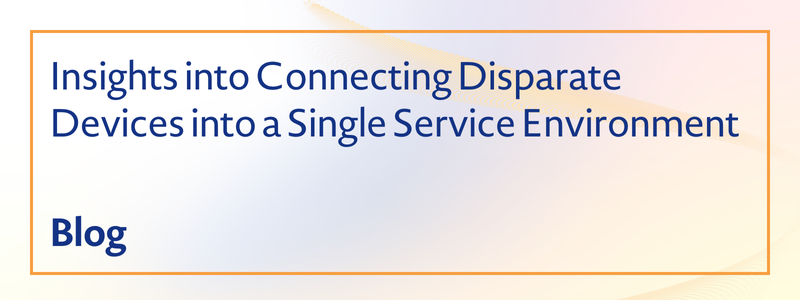Insights into Connecting Disparate Devices into a Single Service Environment


(Source: Laura Ockel on Unsplash)
Connected devices are becoming more common within modern service environments. According to Gartner, Internet of Things (IoT) technology was one of the top technology adoption trends in 2020. However, IoT tools' potential for data creation, distribution, and applications is not always being leveraged to its full potential across the market.
By connecting devices into a single service environment using IoT, field service organizations can more effectively leverage their asset data, engage in predictive and proactive maintenance, and gain better visibility into the end-user experience. If your organization is considering a widespread rollout of IoT technology, here are some insights into what it could mean for both your company and your customers.
Don't miss new reports! Sign up for The Field Service Newsletter
The Benefits of Connecting Device with IoT Technology
IoT in field service creates new opportunities to boost team productivity and drive customer satisfaction. According to Susan Galer, Communications Director at SAP, in Forbes, IoT is a must-have for predictive maintenance: "With this data, organizations can anticipate vulnerabilities, sometimes providing service before parts break down, heading off costlier or even catastrophic failures. There's less time wasted all around, as service providers with a 24/7 view of equipment data can more efficiently plan, schedule, and complete on-site service, keeping businesses up and running."
Connected devices can also provide important data about productivity in the field. With the strong implementation of back-end solutions to draw, sort, and analyze field service data, organizations can deliver up-to-date insights to technicians in the field and even support end-users in self-service initiatives.
According to a recent report from the Field Service conference series and WBR Insights, entitled "The Operations Guide to Connected Devices," 54% of field service organizations were already using IoT technology to anticipate vulnerabilities in 2020, while 53% were using it to drive customer satisfaction.
By aggregating IoT data to a single system, these organizations can provide customers and end-users with rapid responses to service requests and more effectively deliver on customer expectations. These solutions save them valuable time, especially when setting automated scheduling tools to trigger when IoT data indicates maintenance is required.
This technology can then be combined with mobile service technologies, such as augmented reality (AR) and digital twin technologies, to predict customer needs, automated responses, and provide customers with more options for remote and in-person service.
Overcoming Barriers to Reaching IoT Maturity
Still, some field service teams aren't getting the most from their IoT data, even if they've connected their deployed assets to IoT devices and are actively connecting data from the field. Without the means of appropriately structuring it, storing, and responding to IoT data, there is little the field organization can do to leverage it for business outcomes. The real-time response customers demand is predicated on teams' abilities to draw insights from data and coordinate a multi-faceted response.
Common barriers to IoT adoption and maturity are both internal and external. Organizations that launch pilot programs of their field service IoT programs must take steps to ensure they are operating within the right legal and contractual frameworks. They must also ensure there is buy-in across the organization and that change is managed effectively so that every team involved in the program can benefit.
According to an analysis of large-scale pilots (LSP) or IoT programs in Europe by researchers from the Lulea University of Technology, and the University of Skovde, in Sweden, "developing suitable inclusive strategies of awareness," "Involving users early on in the process," "focusing on the added value," "and engaging in ecosystem development," were all strategies organizations can use to support the adoption and widespread deployment of IoT systems.
Recent enterprise solutions that complement the use of IoT data—machine learning, robotics, artificial intelligence (AI), edge computing, and mobile technologies for technicians—must also be incorporated to transform how field service teams approach connectivity and data collection from the field.
Prepare for the Future of IoT in Field Service
While some organizations may wish to focus on specific technology deployments, many field service organizations are focusing on broader initiatives that will enable them to anticipate vulnerabilities in equipment, improve productivity, drive customer satisfaction, and create a more executable data environment.
Moving forward, field service leaders must take steps to structure data collected in the field, so it can be used easily by analysts and technicians in a single service environment. With a fully integrated IoT data ecosystem, field service organizations will be in a better position to take advantage of advanced technologies like AI and others.
To learn more about how your field service organization can connect deployed assets with IoT technologies and leverage IoT data to improve business outcomes, don't miss the next Field Service Virtual Summit, a special event for leaders in customer success, service, and support.
You can register for the event for free, right now.